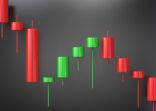The Amundi Absolute Volatility World Equities Fund and the firm’s Absolute Volatility Euro Equities Fund delivered 24.2% and 15.8% annual returns, respectively, in 2008, according to data from FE. In that year equity funds, on average, suffered losses of 47%, and bond funds lost, on average, 10% in US dollar terms. (FSA‘s sample includes funds available today to investors in Hong Kong and/or Singapore, with more than 10 years of track record.)
The two funds provide targeted exposure to the volatility of the equity market. The exposure is engineered with a portfolio consisting in 35% of options, 40% of commercial paper, 10% of cash and foreign currency, and 9% of other mutual funds, as the fact sheet of the world equities fund illustrates.
While profiting from high volatility seems a good hedge strategy in case of a market crash, generating consistent positive returns during times of moderate or low volatility appears much more difficult.
The managers of both funds, Gilbert Keskin and Eric Hermitte, focus on managing the portfolios’ vega, which is the sensitivity of its value to changes in implied volatility of the market. Implied volatility, in turn, is the estimate of the volatility of a stock (or an index), calculated from the current prices of options on that stock.
Ideally, the portfolio’s vega would be boosted when an increase in volatility is expected, and reduced or turned negative, when calmer markets are in the forecast. The task is more challenging when volatility stays flat for a long time.
Sadly, after the good 2008, neither fund has come close to delivering a comparable performance. While the world equity fund managed to eke out positive returns between 3.7% and 7.1% in 2009, 2010 and 2011, the subsequent years saw only losses. The returns of the European equity fund showed a similar pattern, except for the odd 2015, when it also delivered a 1.9% gain.
Both funds state as their objective delivering a 3% annualised return on top of a reference rate (Libor or Eonia) over each three-year period.
Surprisingly, even the 2008 returns of both fund appear to be only loosely related to the spike in volatility as the global financial crisis unfolded in the second half of the year. Instead, the two funds made gains during the calm first half of 2008. And while they managed to generate more gains in 2009, when volatility subsided, the calm of the period after 2012 has resulted in nothing but disappointment.
The performance attribution provided by the fund casts some light on the challenges in managing a volatility-focused fund. In particular, replication costs of the options eat into the funds’ returns, and often offset them completely, as happened in May 2018, the funds’ managers admitted in their monthly commentary. The mechanics of managing the decaying time value and maturity exposure of the options only add to the complexity.
On top of that, both funds carry a 2.15% ongoing charge, which includes a performance fee.
Amundi Absolute Volatility Funds vs S&P Volatility Index


















